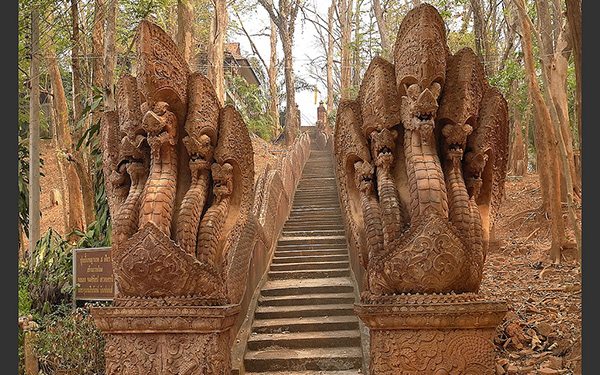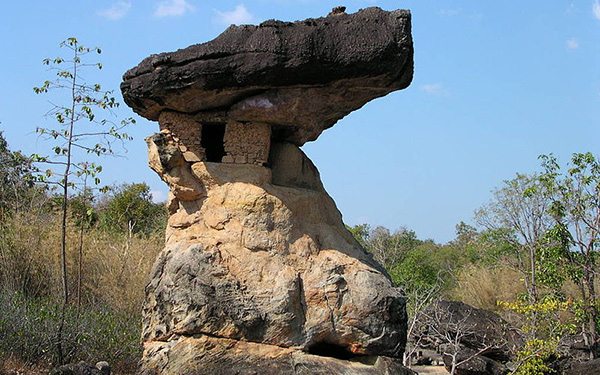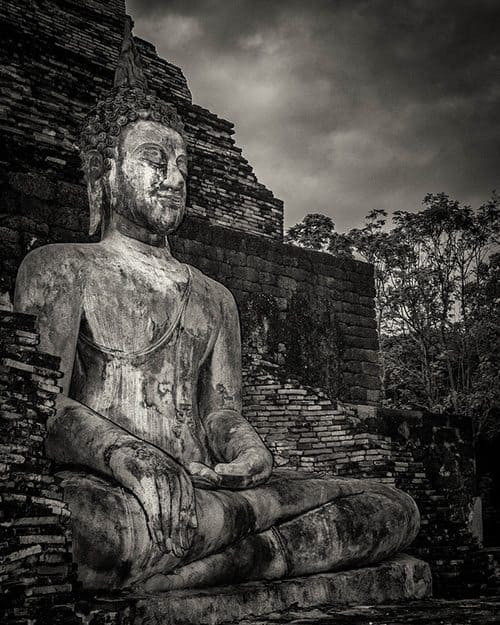Thailand is home to some of the most stunning sites of cultural and historical import in the world.
Whether you’re here for two weeks or ten years, the nation’s abundance of temples, ruins, shrines and historic architecture should be near the top of your must-see list.
The fascinating movement of the Thai kingdom’s borders through the centuries, and the evolution of the Thai people from a slew of different nations and cultures have ensured that these sites show an equally diverse array of influences and styles – most notably Buddhist, Hindu and Khmer.
Expand your horizons; it’s time to go back in time. Here are some of our favourite historical sites…
Post Contents
1. Rattanakosin Island
Bangkok; 18th Century
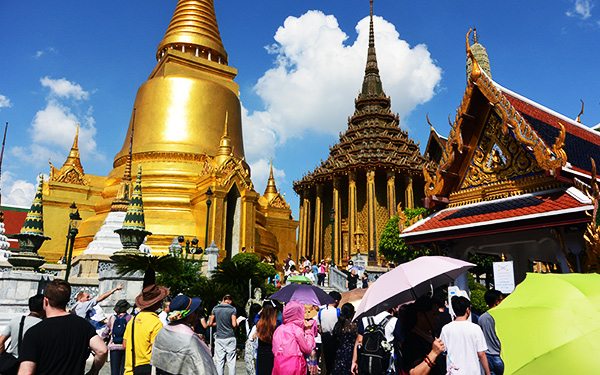
Rattanakosin Island is the historic centre of Bangkok and in many ways, is the antithesis of the Sukhumvit neighbourhood (save for similarly pesky levels of traffic). With the Chao Phraya river framing its western side, small artificial moats separate the rest of Rattanakosin from the city that were intended upon their construction in the 18th century to fortify the royal residence: the Grand Palace.
In addition to the Grand Palace complex, Rattanakosin Island is also home to Wat Pho and the Temple of the Reclining Buddha, Wat Saket, The Golden Mount and Wat Suthat – important sites of Buddhist worship. Also in situ is the Giant Swing; a literal giant red swing that was used in the past for young men to swing from in a ceremony every year where they would try and reach an elevated pot of gold.
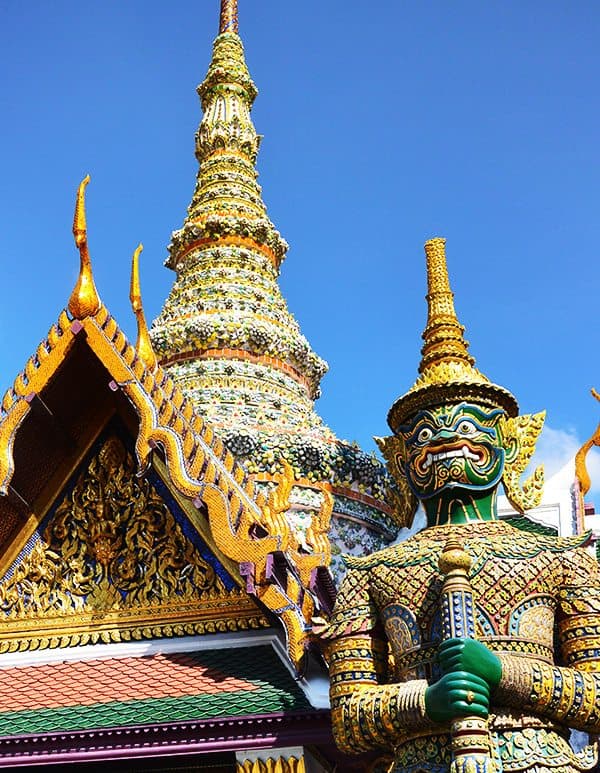
2. Chiang Saen
Chiang Rai; 14th Century
Chiang Saen is one of Thailand’s oldest cities, thought to have been built in 545 AD by Tai migrants from China, and one of the most important settlements of the Lanna Kingdom, founded in 1325 or 1328. It was sacked by King Rama 1 in the early 19th century and was nought but a ghost town until the 20th. Chiang Saen sits on the banks of the Mekong River, looking over to Laos and Myanmar, and forms part of the legendary Golden Triangle.
Within the city walls are plenty of historical temples, including Wat Phra That Chedi Luang, a site built by King Saen Phu in the early 13th century and incorporating an 88-metre high Chedi, and Wat Phra Chao Lan Thong, a 1,200kg Buddha statue. Plenty of ancient sites exist outside of the city walls to explore as well.
3. Ayutthaya
Ayutthaya; 14th Century
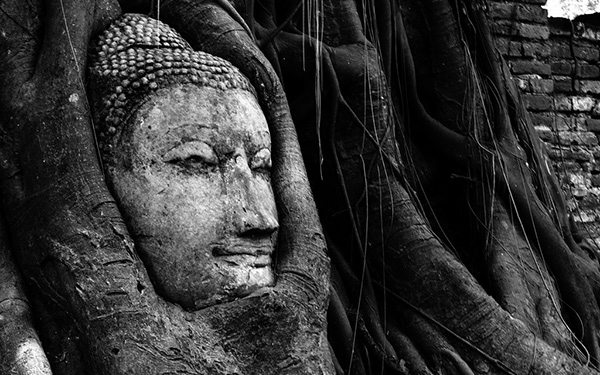
Wat Phra Mahatha|By Pitch87
Just marginally north of Bangkok is the magnificent city of Ayutthaya, a former Siamese kingdom and once the largest city in the world. Established in the mid-14th Century, Ayutthaya was sacked by the Burmese in 1767, and it was almost wholly razed to the ground. Although now the historical city is just ruins, its grandeur has hardly paled and it’s one of the most important and impressive places to visit in Thailand. The main historical sites can be found on the island of the old city, formed at the confluence of three rivers: the Chao Phraya, Lop Buri and Pa Sak.
There’s plenty to see in Ayutthaya; some of the main places to look out for are Wat Phra Si Sanphet, abundant in chedis, Wat Phra Mahatha, home to the Buddha head encased within the roots of a tree, and the Phet Fortress.
4. Phimai
Nakhon Ratchasima; mostly 11th and 12th Century
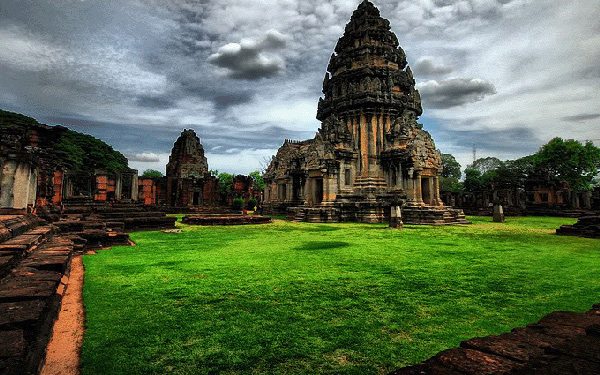
Phimai Historical Park is another treasure trove of Khmer architecture – some of which is even older than the world famous Angkor Wat in Cambodia – and its most important temple marks the end of the Ancient Khmer Highway. Although the structures were constructed for Buddhist worship, evidence of Hinduism and Animism can also be spotted. The complex as a whole bears a striking resemblance to Angkor Wat, if on a smaller scale.
Inside the park is the Phimai Sanctuary – Thailand’s most important Khmer site – which is home to a pagoda, Naga bridge and Gopura, and you can also find the city gate and walls, and Men Brahmadat – thought to be where a past king was cremated. Just 2 kilometres away is Sai Ngam – the largest Banyan tree in the world – and the Thung Samrit Memorial – a field commemorating a battleground between the Khorat people and the Laotians.
5. Phu Phra Bat
Udon Thani; Prehistoric to the 10th Century
Phu Phra Bat historical park is notable for its array of unusual rock formations – borne of underwater erosions 15 million years ago – which civilisations past used as canvases for art and religious worship. Paintings are easily distinguishable on many of the rocks, while some are more faded; the oldest are thought to date back 6,000 years. As well as these prehistoric remnants, evidence of Dvaravati and Khmer culture in the park’s temples and shrines can also be found.
Hor Nang Usa (above) is the park’s most notable rock formation and is the stuff of legend: an overprotective mythical king was thought to have forced his princess daughter to live inside it, before she managed to escape with her prince charming. A shrine has also been constructed here.
6. Phanom Rung
Buriram
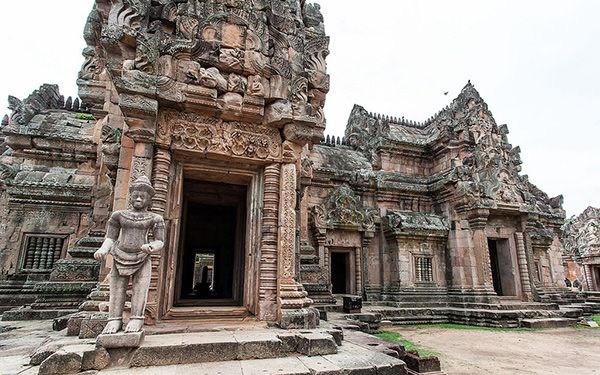
By John Shedrick (CC BY 2.0 licence)
Phanom Rung is a historical park in Isaan, and is famous for its absolutely stunning preservation of Khmer architecture built between the 10th to the 13th century. In essence, it’s a temple complex that was initially Hindu but later graduated to Buddhist, although the varying religious and cultural influences are easy to spot on the site.
The buildings at Phanom Rung are arranged so as to mirror the arrangement of Hindu god Shiva’s heaven, while images of fellow Hindu deity Vishnu are also evident. The structures include the White Elephant House, a royal processional walkway, and three naga bridges symbolising the link between heaven and earth. The site is adjoined to an extinct volcano.
7. Death Railway
Kanchanaburi; 20th Century
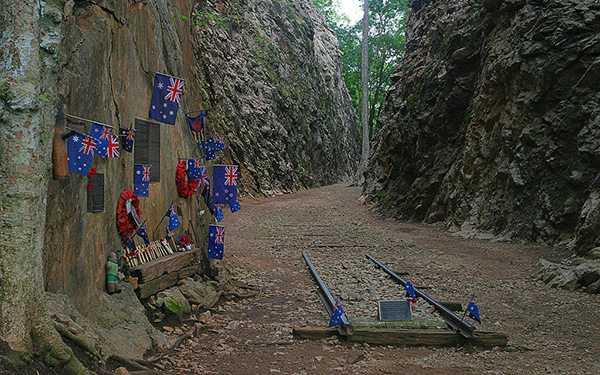
By Diliff
The Death Railway is the name given to the Burma Railway; a 415-kilometre rail line built between Thailand and the now-Myanmar by Japan during World War II. The workers involved in the construction were compelled under forced labour and comprised of Allied prisoners of war (POWs) and the Romusha – Asian civilian labourers. It’s thought that around 90,000 Romusha and over 12,000 POWs died during the construction, thanks to the brutality of the overseeing Japanese military officials and hellish conditions that lead to disease and starvation. Death Railway is one of the most humbling places to visit in Thailand and an important site in World War II history.
Two of the most famous points on the railway are Bridge 277 – the so-called Bridge On The River Kwai – and Hellfire Pass, pictured above. The latter was one of the most technically difficult railway cuttings to engineer and was given its name thanks to the sight of starving workers labouring by torchlight; a glimpse of hell.
8. Muang Singh
Kanchanaburi; from the 12th to the 14th Century
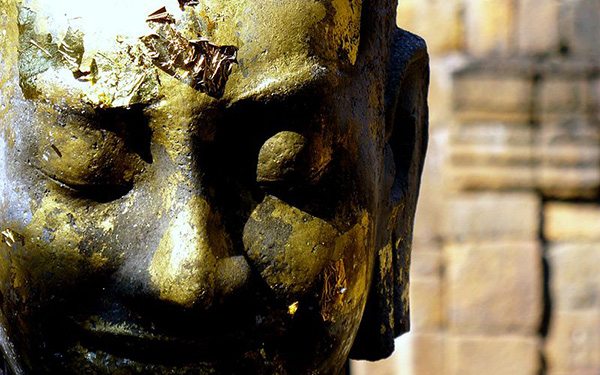
By yeowatzup
Muang Singh historical park is home to two Khmer temples and two other monuments, marking the western border of the ancient Khmer kingdom, and probably latterly serving as a military stronghold. A laterite wall frames the ruins, while the Kwai Noi River can be found to the east. As well as the structures themselves, a host of tools, household artefacts, Buddha statues and even pre-historic skeletons have been found in the vicinity of the park, some of which can be viewed in the site’s museum.
Prasat Muang Singh is the main temple, built in the Bayon style of Angkor, and its central tower (or prang) is representative of Mount Meru – the centre of the universe in the Hindu belief system. There is another neighbouring Khmer temple in the park although very few ruins now remain. The structures are thought to have been built between the 12th and 14th centuries.
9. Sukothai
Sukhothai; 13th Century
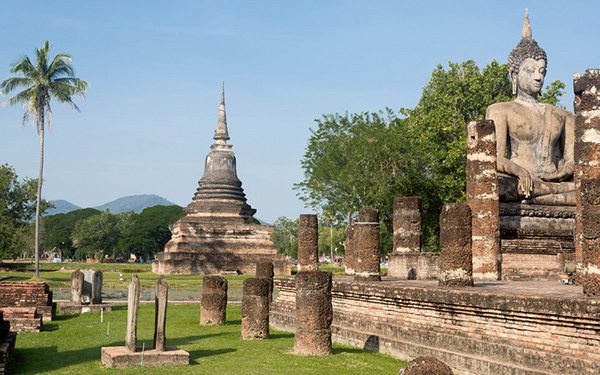
By smagdali
Sukothai Historical Park is one of the most important cultural and historical places to visit in Thailand, covering as it does the ruins of the capital of the Sukothai Kingdom, which was founded in 1238 before giving way to Ayutthaya in the 14th century. As well as the abundance of temples and architecture, the location is stunning, framed with lakes, trees and other natural beauties – it does justice to the name of Sukothai, which translates to “Dawn of Happiness” in Pali.
There is a huge amount to see at Sukothai, with 21 temples preserved in the central zone alone, with countless other structures and architectural finds. Wat Mahathat is the most important temple of Sukothai, and the city’s spiritual centre. It is designed to represent the universe in the Indian mandala design, holding hundreds of chedis, ten viharns and eight mondops. There are also plenty of Buddha relics. As well as Buddhist, Animist and Hindu influences, Lanna, Khmer, Lanka, Ayutthaya and Dvaravati styles are evident in the park.
10. Ban Chiang
Udon Thani; 1,495 BC
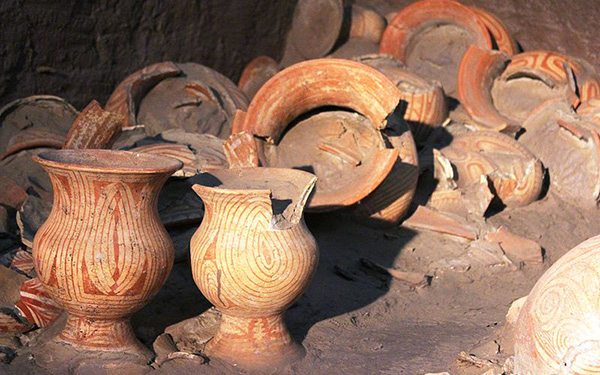
By Kiwiodysee
Ban Chiang is a UNESCO World Heritage Site and is considered Southeast Asia’s most important discovered prehistoric settlement, as it records the earliest evidence of farming and metal manufacturing in the region. The archaeological site – believed to date back to 1,495 BC – is best known for its distinctive red pottery and the fact that it posed as both living quarters and sometime burial site for peoples from both Neolithic and Bronze Age civilisations. As well as pottery, skeletons, grave gifts and rice fragments have all been found at the site.
The Ban Chiang National Museum is the best place to examine and learn more about the archaeology of the site and the artefacts found, while you can buy Ban Chiang-inspired crafts in the neighbouring villages of Ban Pu Lu and Ban Kham O.
11. Wiang Kum Kam
Chiang Mai, 13th Century
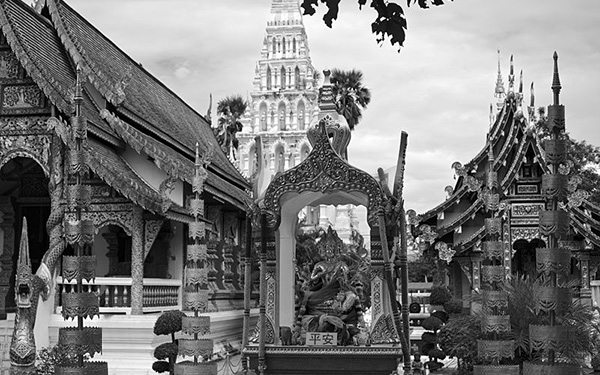
By Pratyeka
Wiang Kum Kam, an ancient city on the banks of the Ping River, was once the capital of the Lanna Kingdom before it was relocated to Chiang Mai in 1296 after suffering from innumerable floods. Thanks to the river regularly bursting its banks, Wiang Kum Kam was eventually lost and buried metres underground, before being discovered once again in 1984. Artefacts found in its uncovering date back as far as the 8th century.
Among the structures uncovered from the lost city are the beautiful Wat Chedi Liam – a five-storey Chedi dedicated to both Brahma and Buddhism – and Wat Chang Kham, built by craftsman Kan Thom and found within the grounds of a working temple.
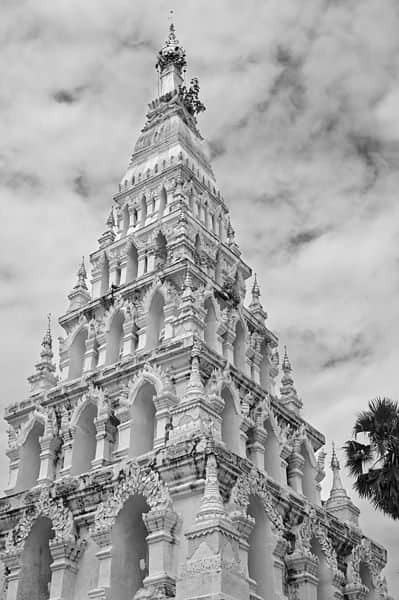
Wat Chedi Liam. By Pratyeka
Where are your favourite historic places in Thailand?
Featured image is by John Shedrick (CC BY 2.0 licence)

